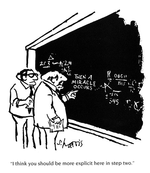Rice:Research
Research Description
Overview
Kinesin tail architecture
Kinesin coordination with other motors and regulators
Regulation of the mitotic kinesin Eg5
Overview
Molecular Motor Proteins
Active transport one of the hallmark processes defining life. Within eukaryotic cells, active transport is driven by a surprisingly small set of molecular motor proteins. There are three broad classes of motors: kinesins, which generally move toward the plus ends of microtubules, dyneins, which move toward microtubule minus ends, and myosins, which move along actin filaments.
Our Focus: How do kinesin motors know what cargo to pick up and where to go?
A single type of kinesin motor performs many different jobs that involve transporting distinct cargoes to specific locations, and kinesins often cooperate with other motors in cargo transport. Our research seeks to determine how different regulators can initiate or stop kinesin-driven movement of specific cargoes in response to particular cellular cues. We aim to understand and to be able to manipulate kinesin-driven cargo movement at the molecular level.
See a video of a kinesin motor moving a cargo along a microtubule in the video here: | Video This video is called "The Inner Life of the Cell", made by Harvard University and XVIVO Animation. It features kinesin from 1:15-1:25. Note that the level of detail is much higher for the “walking” part than for the “cargo-binding” part! That is why we are focusing our attention there.
While the detailed stepping mechanisms of several molecular motors are well known, the mechanisms by which they perform their duties in the cell are more complex and much less well-characterized. The reason for this is that the tail domains of motors, which have functions such as assembly of motors into larger structures, cargo binding, and regulation, are poorly understood. My laboratory’s research seeks to begin elucidating the function of molecular motor tail domains.
Conventional kinesin is a molecular motor that translates the energy of ATP hydrolysis into unidirectional transport of its cargo. The tail and light chain domains of conventional kinesin regulate its activity when the motor is not cargo-bound in the cell, but the mechanism by which they perform this regulation is not completely understood. Mutations in kinesin and proteins that interact with it have been implicated in several diseases, including colon cancer, Alzheimer’s disease, and neurofibromatosis. Understanding how kinesins are regulated in the cell may lead to new therapeutics for these diseases. Our long-term goal is to have a detailed structural understanding of how the kinesin tail and light chain domains regulate the motor’s activity.
The current research in my laboratory focuses on the idea that a direct interaction of the kinesin tail with the head is likely to be the cause of the drastic effects on kinesin’s ATPase and microtubule-binding activity that occur when the motor is regulated. We will use mutagenesis and chemical crosslinking to determine exactly which amino acids of the tail and/or light chains interact with the head, and we will perform EPR (electron paramagnetic resonance) and FRET (fluorescence resonance energy transfer) spectroscopy to detect conformational changes that take place upon regulation.
